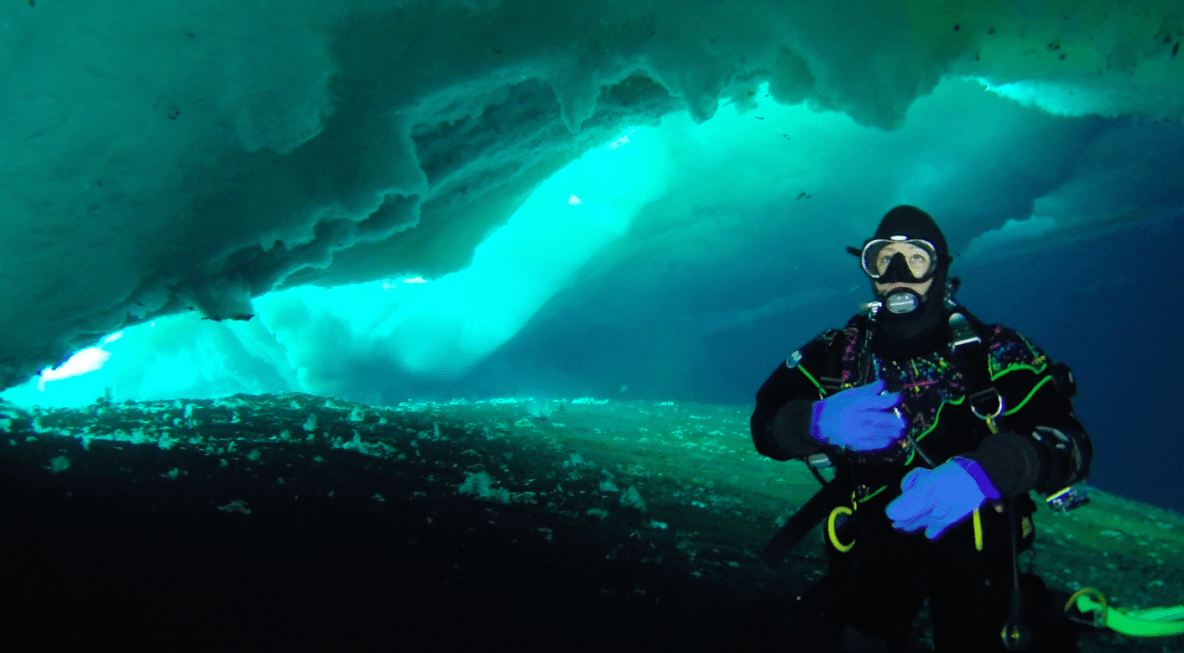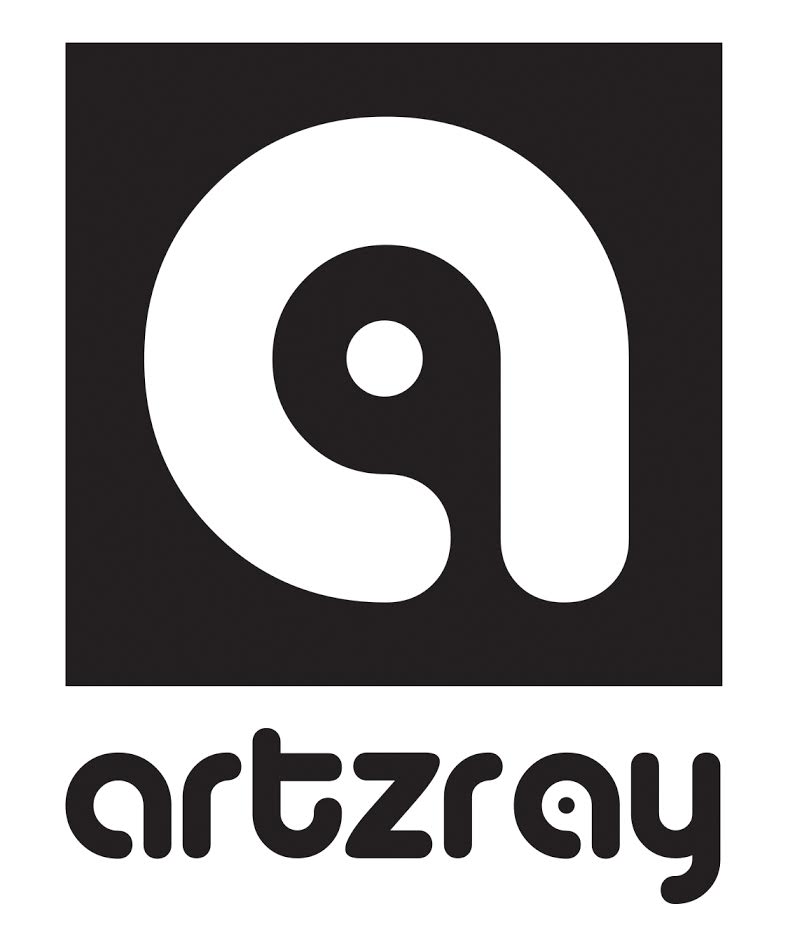Artist Lily Simonson Explores Deep Sea


LILY SIMONSON, SPECTRALSCAPE 2-4 (TRIPTYCH), 2014, OIL, ACRYLIC, AND ULTRAVIOLET PIGMENT ON CANVAS, 60 X 48 INCHES EACH. INSTALLATION VIEW COURTESY CB1 GALLERY AND JAY OLIGNY.
Lily Simonson’s large-scale paintings and drawings of obscure organisms and newly-explored environments immerse viewers in uncanny scenes that are at once naturalistic and otherworldly. She frequently embeds in scientific expeditions to explore and paint her subjects in situ. Simonson spent three months SCUBA diving and camping in Antarctica as the 2014-15 National Science Foundation Antarctic Artists and Writers Awardee. She has also served as the resident artist aboard the Exploration Vessel Nautilus and the Research Vessel Melville painting organisms collected from the deep sea. Her works have been exhibited across the US and Europe. Simonson’s upcoming solo exhibition at CB1 Gallery in Los Angeles will be on view from April 16-May 28, 2016.
Where are you from?
I was born in Washington DC, but I’ve lived in California for most of the last 15 years.
What type of work do you do?
I make large-scale paintings of remote, otherworldly organisms and environments, from Antarctica to the deep sea.
LILY SIMONSON SKETCHING AT LAKE BONNEY, ANTARCTICA. PHOTO BY PETER REJCEK, 2015.
How did you get your start as an artist?
I have always made art–in particular drawings of marine invertebrates–since I was in preschool. But it didn’t occur to me that I could be an artist full-time until I was in college. I suppose my identity as an artist cemented in graduate school at UCLA.
Who or what are your major influences?
At this point, I’d have to say my biggest influences are the scientists who have brought me on expeditions. I’ve been to sea with brilliant oceanographers like Lisa Levin, Bob Ballard, and Steve Carey. I had the wonderful fortune of working with so many amazing scientists in Antarctica: Joe Levy, Gretchen Hofmann, Philip Kyle, and Diana Wall, among many others. And I am forever grateful to Andrew Thurber, who introduced me to Antarctic life under the sea ice and first told me about the National Science Foundation Antarctic Artists & Writers Program.
My influences in the art world are too many to list, but I’d say that I’m incredibly inspired by female Renaissance painters like Artemesia Gentileschi and Lavinia Fontana. I also learned recently about Maria Sibylla Merian, who was both a scientist and an artist in the 17th century. She was a real pioneer and visionary who sold her artwork to pay for her own scientific expeditions.
LILY SIMONSON, TURTLE ROCK, ANTARCTICA, 2015, OIL, ACRYLIC, AND ULTRAVIOLET PIGMENT ON CANVAS, 24 X 36 INCHES. IMAGE COURTESY OF THE ARTIST.
What advice would you give a young artist just starting their career?
I think that the most important, and most challenging skill you can learn as an artist is discipline. But don’t be too hard on yourself. It’s like a muscle that you have to build up slowly.
When is the first time you were satisfied with your art?
When I was in high school, I participated in a really special three-year art program. At the end of my senior year, we had a thesis exhibition. I think that seeing my work hung together in a cohesive way was super satisfying.
What do you think is the right educational path to a career in the arts? Do you endorse art school over a liberal arts education, or should you skip a formal art education and just get out and practice your art form?
I think that getting a well-rounded education is crucial for most people. Beyond that, art school at the graduate level is great for building a community of artists around you. I am skeptical of costly MFA programs. It is so unlikely that artists will make a lot of money, that I can’t recommend going into debt for an art education! I was lucky enough to go to an MFA program that funded all its students. Many state universities offer free or low-cost MFA programs, and I recommend exploring those.
LILY SIMONSON, BLACKLIGHT MOTH, 2012, OIL AND ULTRAVIOLET PIGMENT ON CANVAS, 22 X 22 INCHES. IMAGE COURTESY JAY OLIGNY AND CB1 GALLERY.
As a working artist what type of job offer would it take for you to give up your art and take a regular non-artist job?
There is nothing I would rather do than be an artist!
What has been the single moment in your life that you knew that you would pursue a career in the arts?
When I was in college and realized that being an artist meant that I could devote the rest of my life to learning.
What is your artistic super power?
That my art has brought me to these far-flung parts of the globe that most people never have the chance to see firsthand.
Tell us about the intersection of Art & Science in your work.
My ongoing collaborations with researchers aim to celebrate the longstanding tradition of art and science working in concert to expand knowledge. The human desire for exploration and revelation have historically been the driving force of both science and art, and my drawings and paintings position these alien species and remote worlds as symbols of this shared impulse.
Video of Lily Simonson SCUBA diving at Turtle Rock, Antarctica. Video courtesy Rob Robbins.
How do you incorporate technology into your artistic method?
The most interesting technology that I use would be the equipment needed to observe the marine organisms that I paint! While at sea, we use submersibles and multi-corers to collect specimens that I can paint. In Antarctica, I used a special dry suit to dive under the sea ice in the -2 degree Celsius water. It was still plenty cold, but not as bad as diving in a wet suit!
ROB ROBBINS AND LILY SIMONSON AT A DIVE HOLE WITH A WEDDELL SEAL, ANTARCTICA. PHOTO BY CONNOR MCCORMICK, 2014.
Xbox or Playstation?
I never really play video games, with one exception. The folks living and working in Antarctica need to be creative about staying active. While I was there, I got introduced to “Just Dance,” a video game for Wii Fit and Xbox 360. We downloaded the videos from the game and danced along every day in the field, even without the console or internet access.
Any tips on how to prepare your portfolio?
I think it’s important to explore all your ideas in depth and take your time. Doing that will give you a cohesive portfolio.
Describe your studio practice or methodology for producing your artwork.
I often use preserved specimens as models when I’m in the studio. I build my paintings up slowly, using dozens of translucent glazes to enhance luminosity.
LILY SIMONSON, BENTHIC BACCHANAL, 2012, OIL ON CANVAS, 48 X 60 INCHES. IMAGE COURTESY JAY OLIGNY AND CB1 GALLERY.
Dogs, Cats or Reptiles?
All of the above!
Caffeine of choice? Coffee, Tea or Red Bull?
Coffee!

